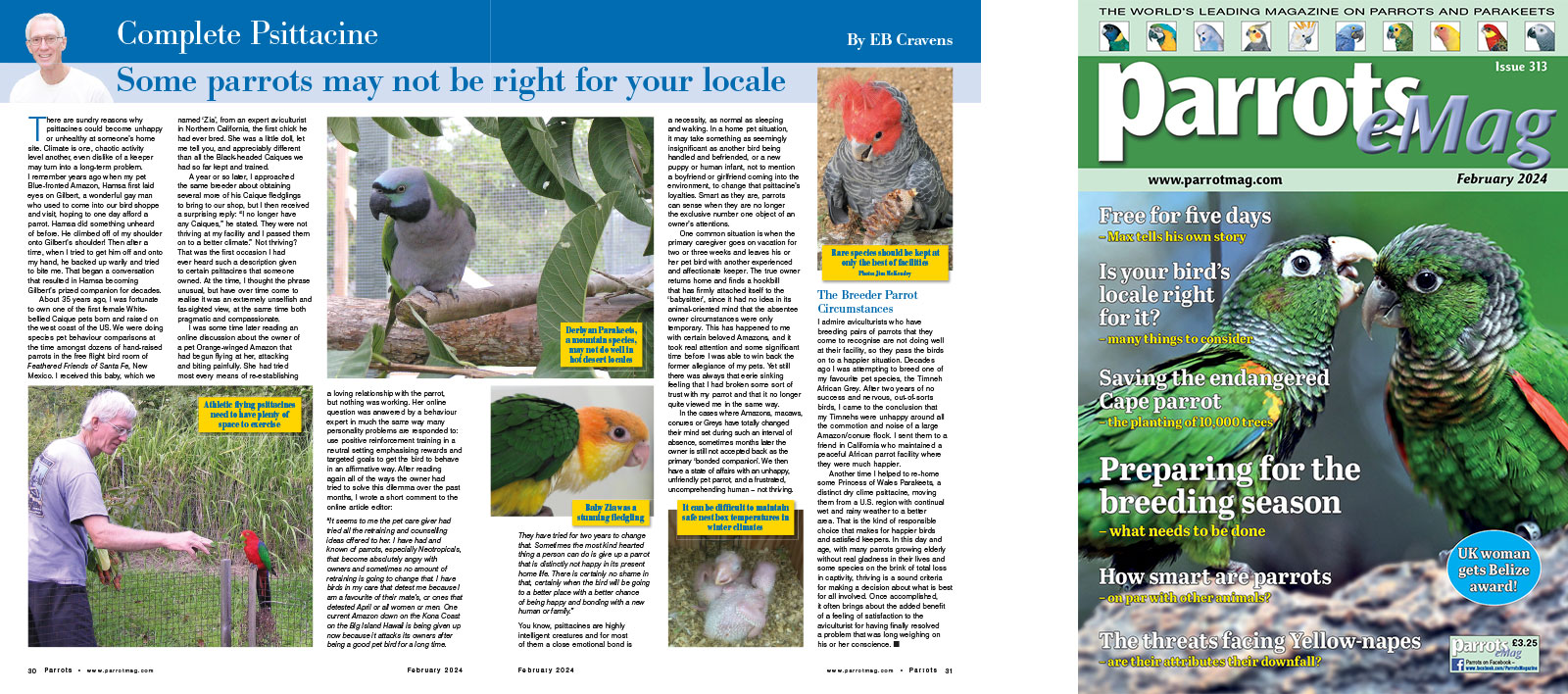
Complete Psittacine by Eb Cravens
There are sundry reasons why psittacines could become unhappy or unhealthy at someone’s home site. Climate is one, chaotic activity level another, even dislike of a keeper may turn into a long-term problem. I remember years ago when my pet Blue-fronted Amazon, Hamsa first laid eyes on Gilbert, a wonderful gay man who used to come into our bird shoppe and visit, hoping to one day afford a parrot. Hamsa did something unheard of before. He climbed off of my shoulder onto Gilbert’s shoulder! Then after a time, when I tried to get him off and onto my hand, he backed up warily and tried to bite me. That began a conversation that resulted in Hamsa becoming Gilbert’s prized companion for decades.
About 35 years ago, I was fortunate to own one of the first female White-bellied Caique pets born and raised on the west coast of the US. We were doing species pet behaviour comparisons at the time amongst dozens of hand-raised parrots in the free flight bird room of Feathered Friends of Santa Fe, New Mexico. I received this baby, which we named ‘Zia’, from an expert aviculturist in Northern California, the first chick he had ever bred. She was a little doll, let me tell you, and appreciably different than all the Black-headed Caiques we had so far kept and trained.
A year or so later, I approached the same breeder about obtaining several more of his Caique fledglings to bring to our shop, but I then received a surprising reply: “I no longer have any Caiques,” he stated. They were not thriving at my facility and I passed them on to a better climate.” Not thriving? That was the first occasion I had ever heard such a description given to certain psittacines that someone owned. At the time, I thought the phrase unusual, but have over time come to realise it was an extremely unselfish and far-sighted view, at the same time both pragmatic and compassionate.
